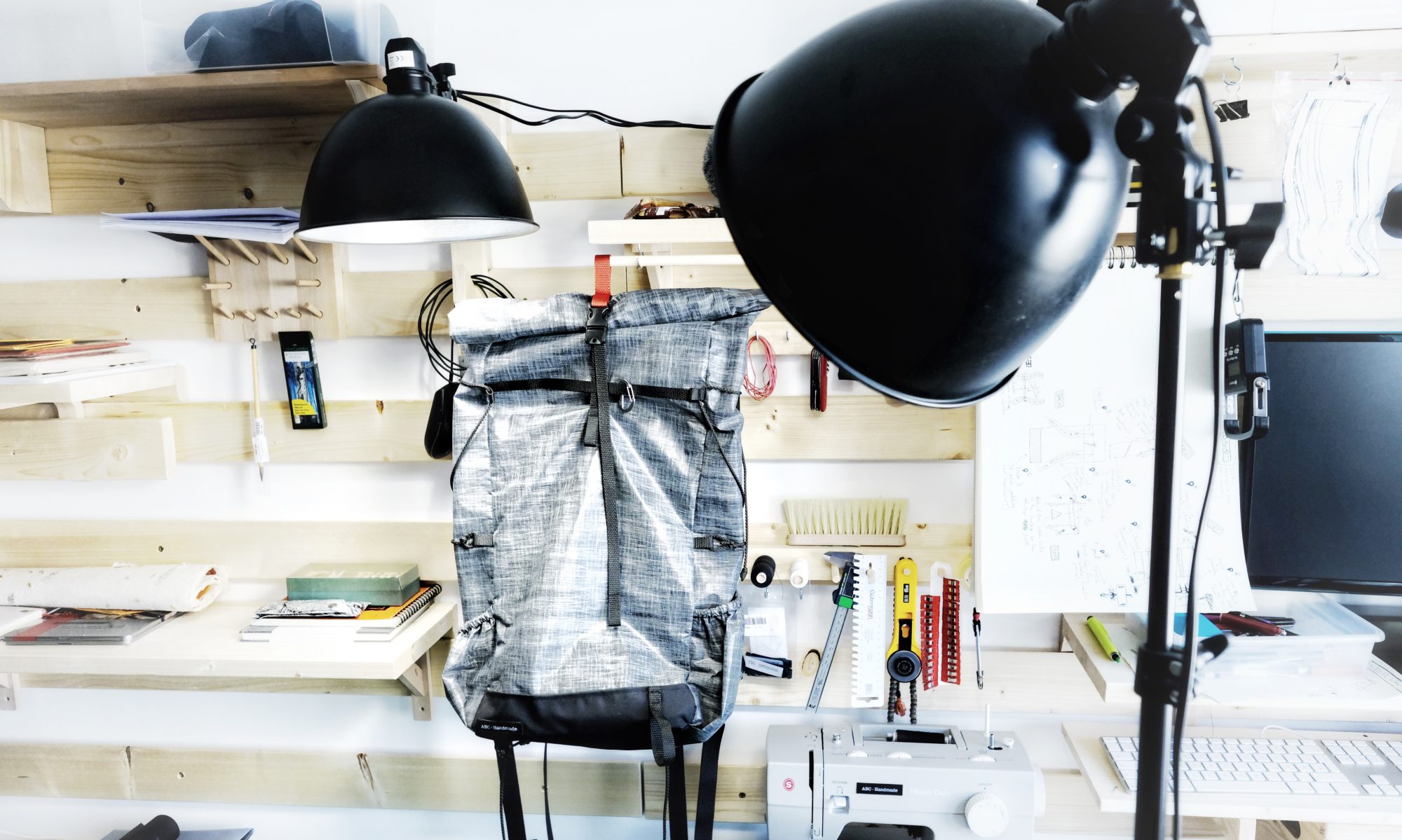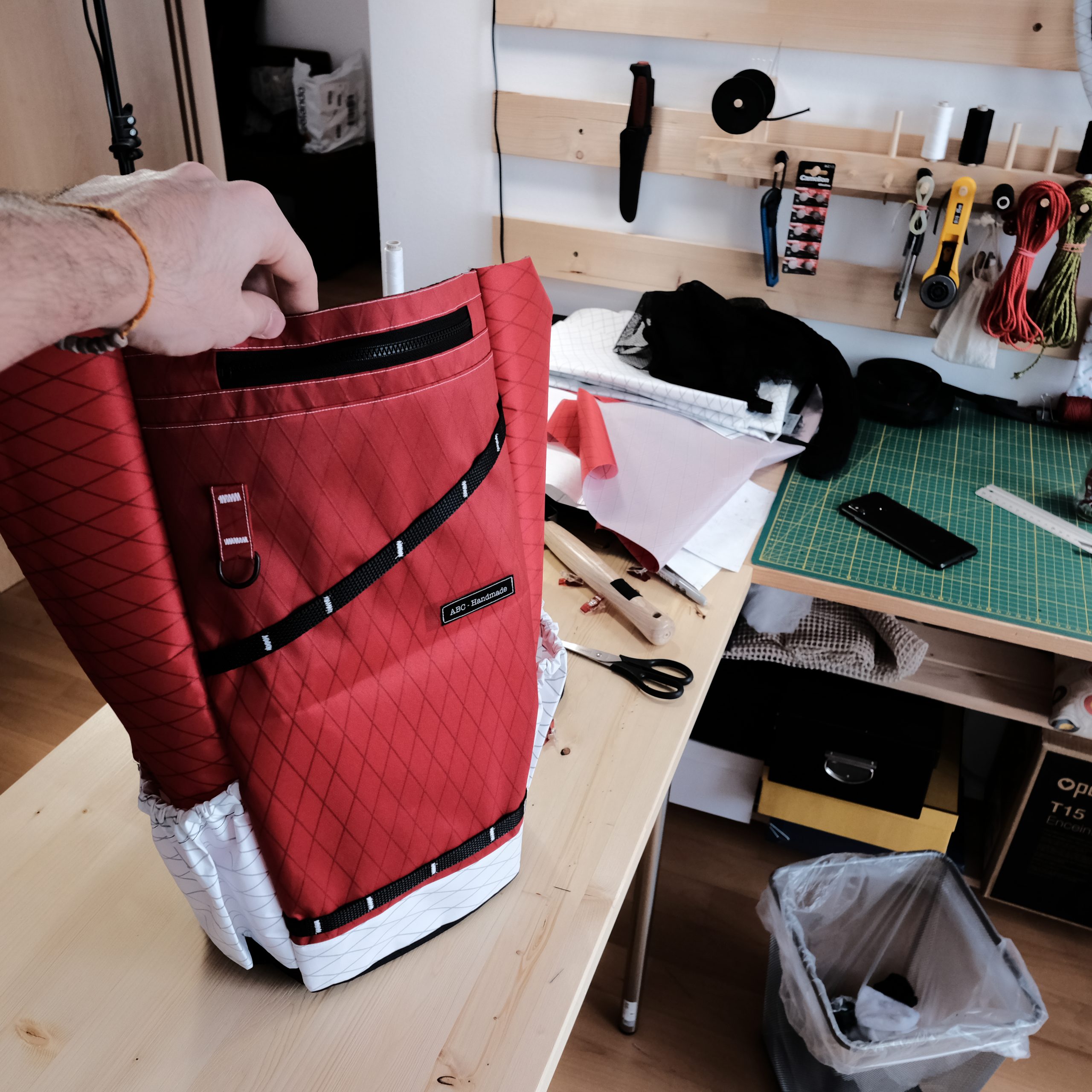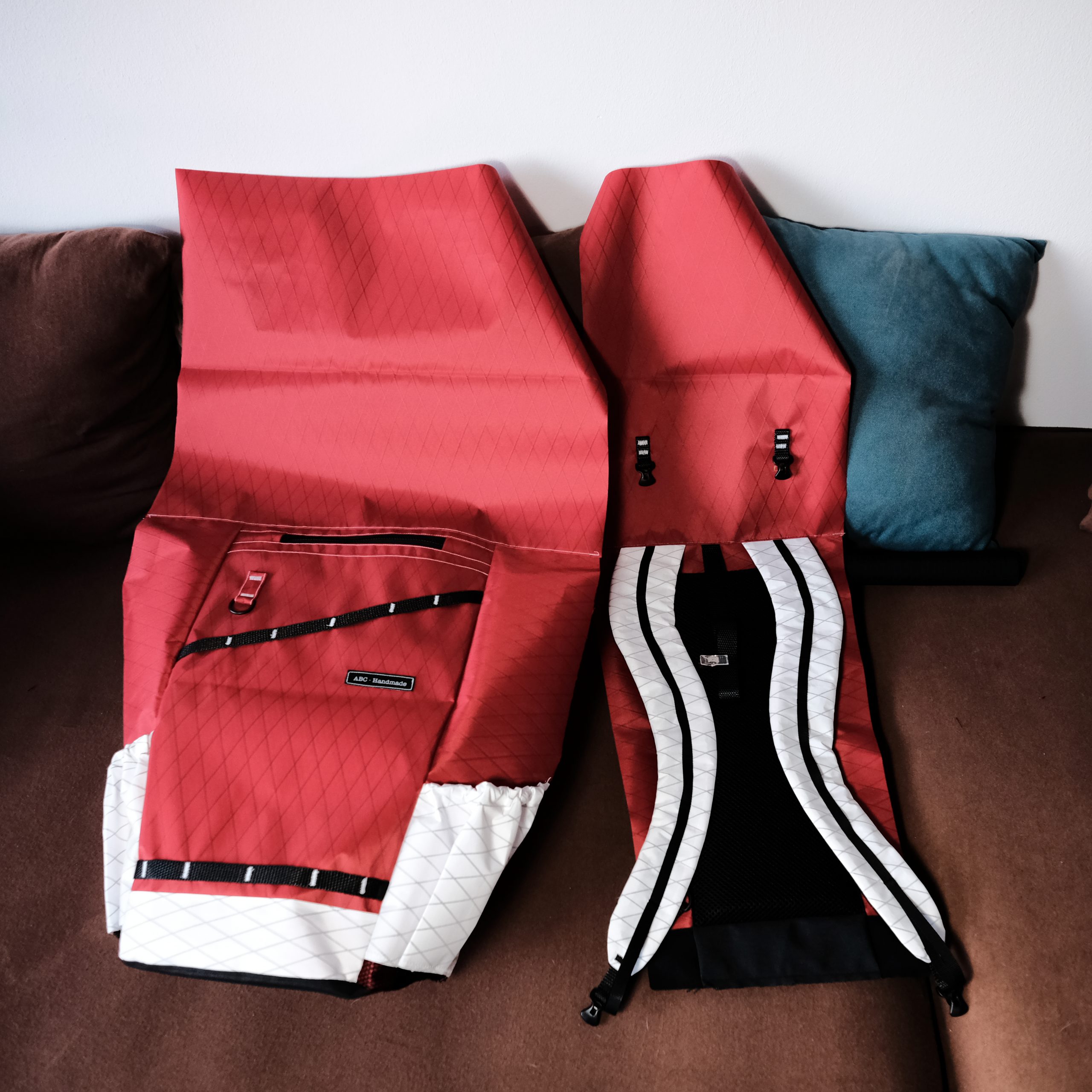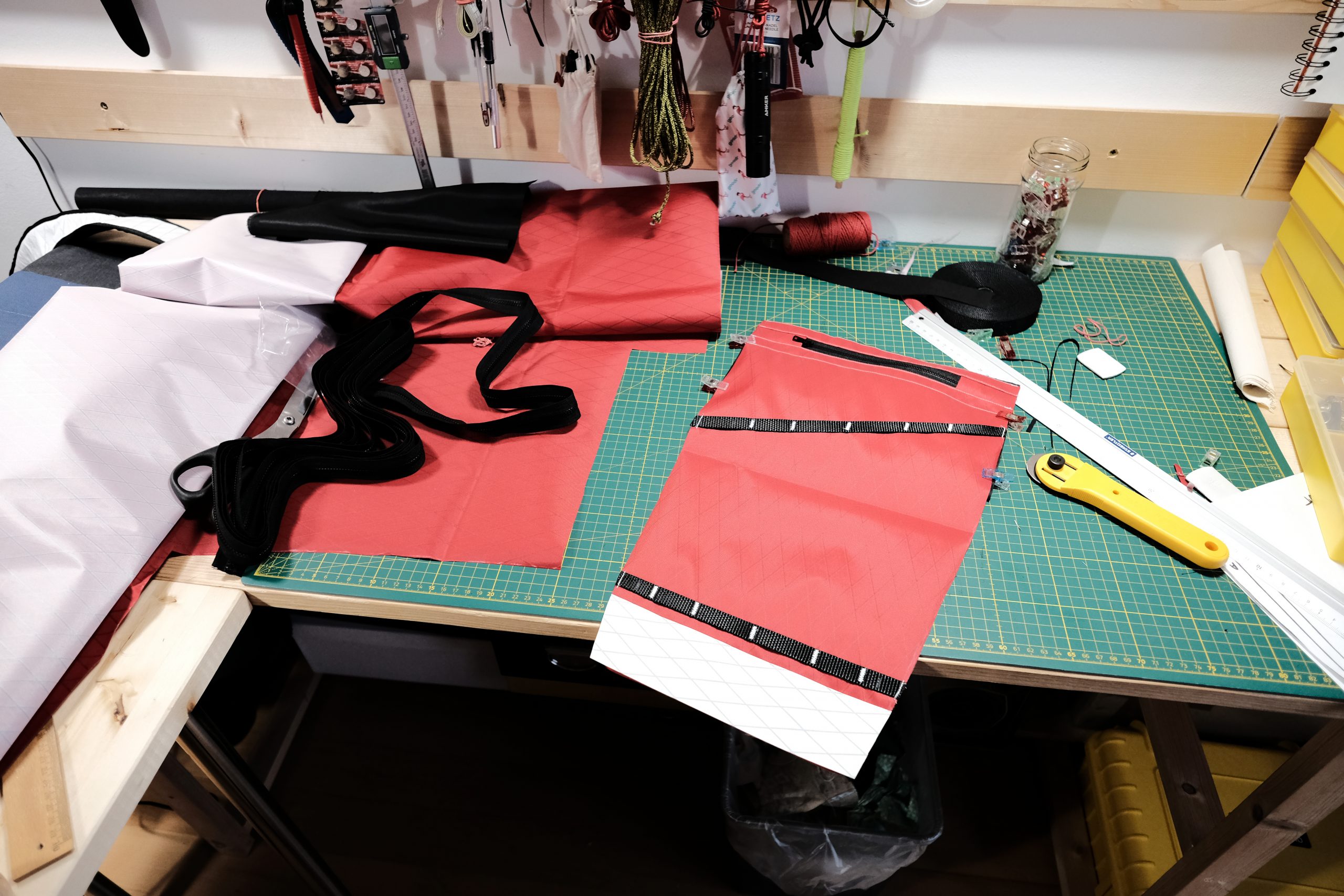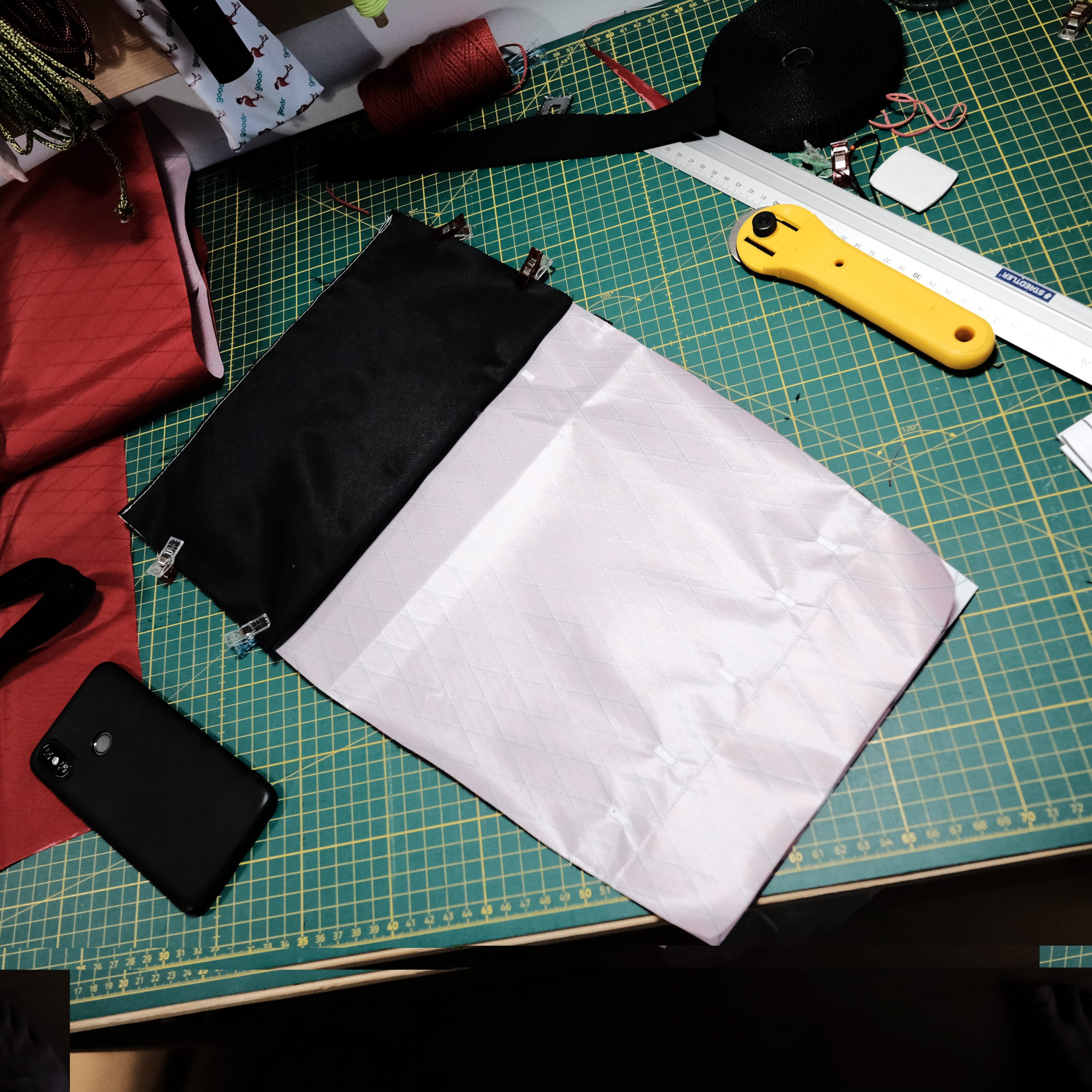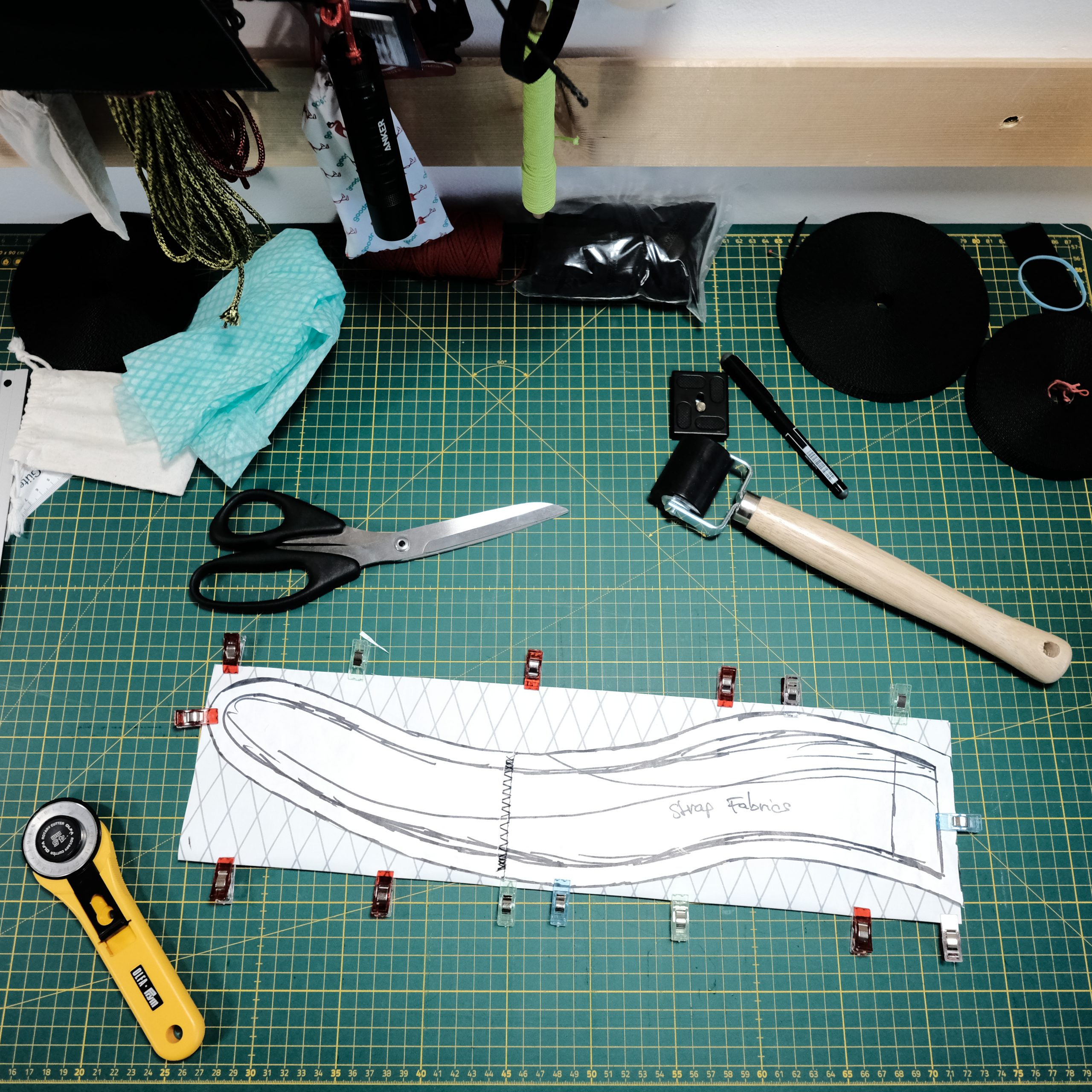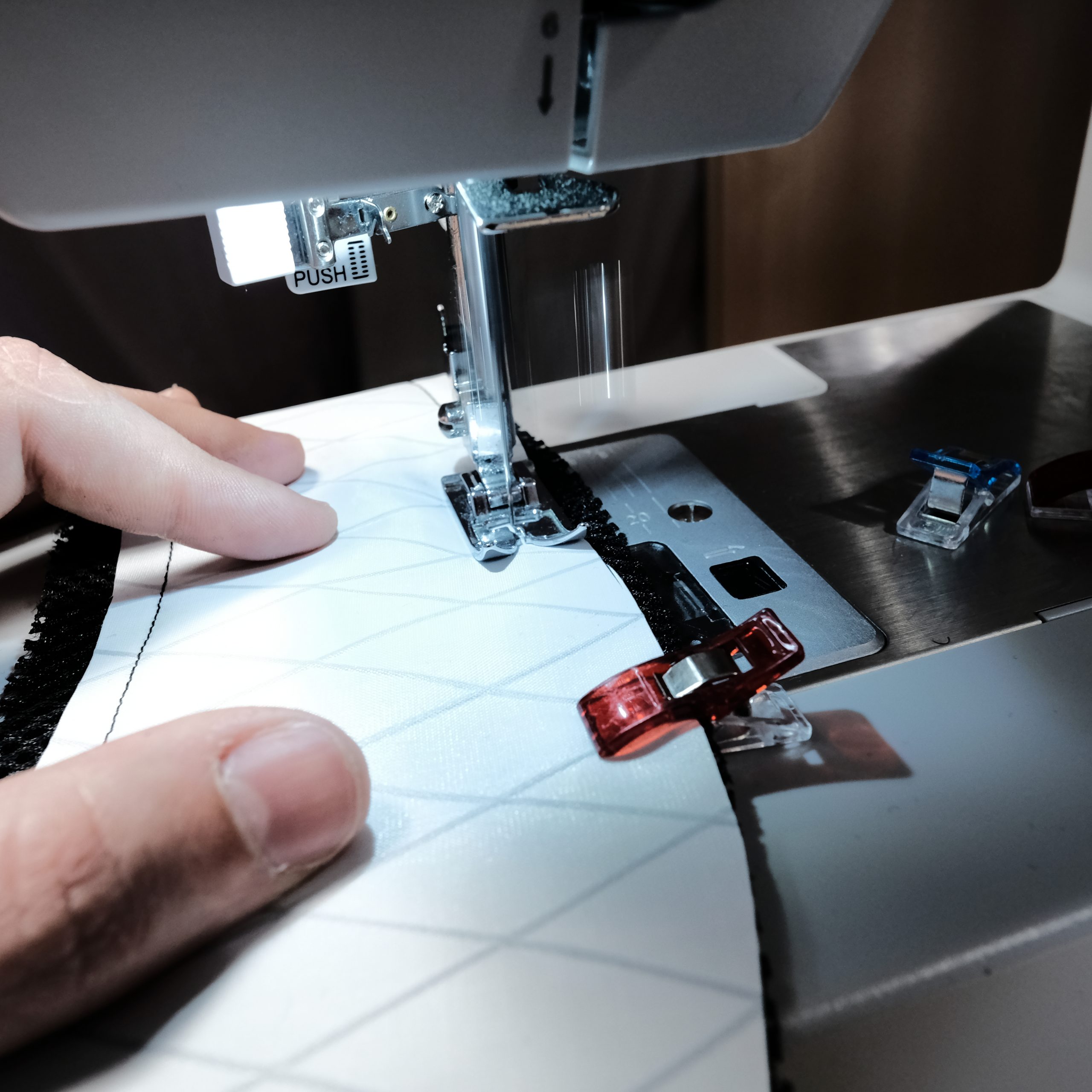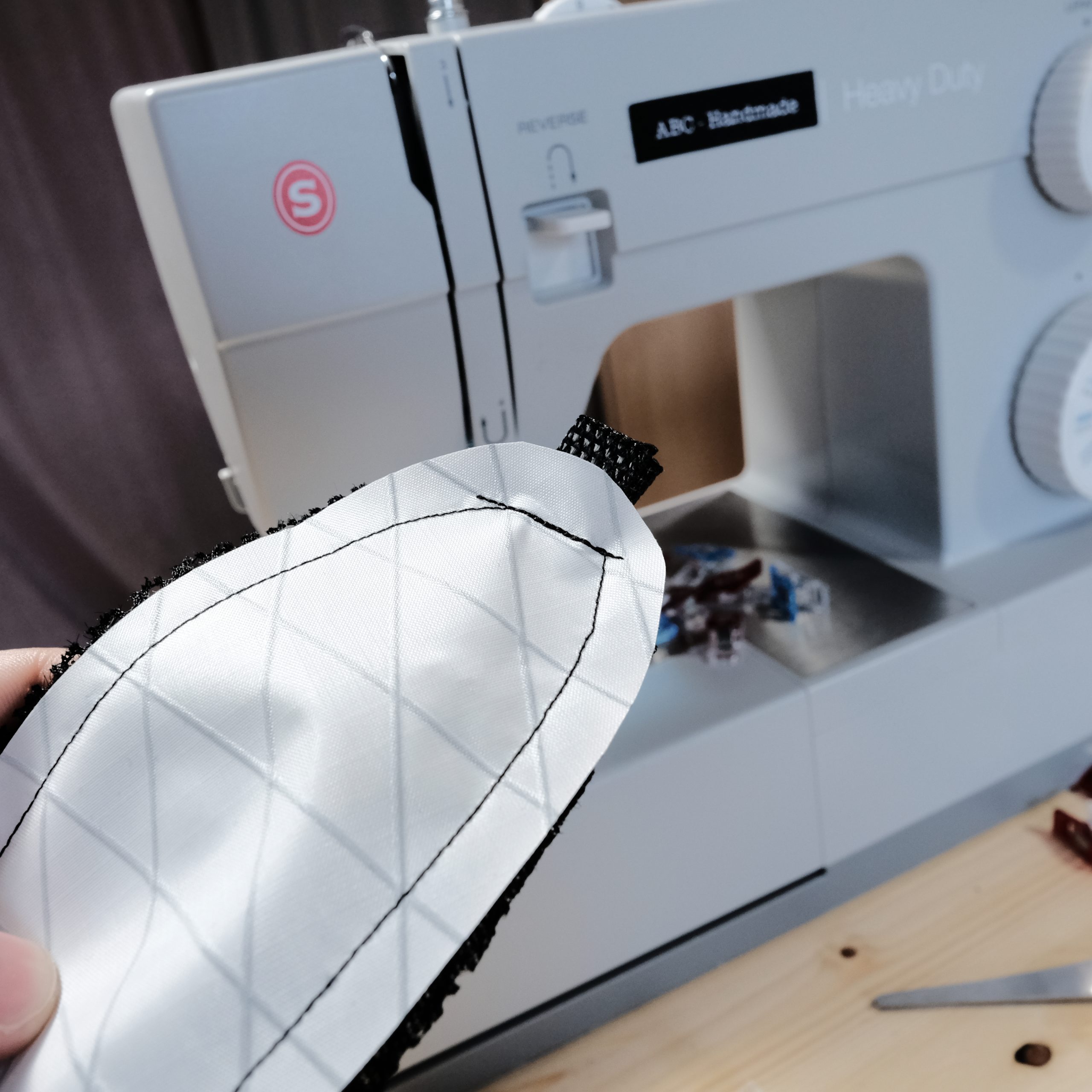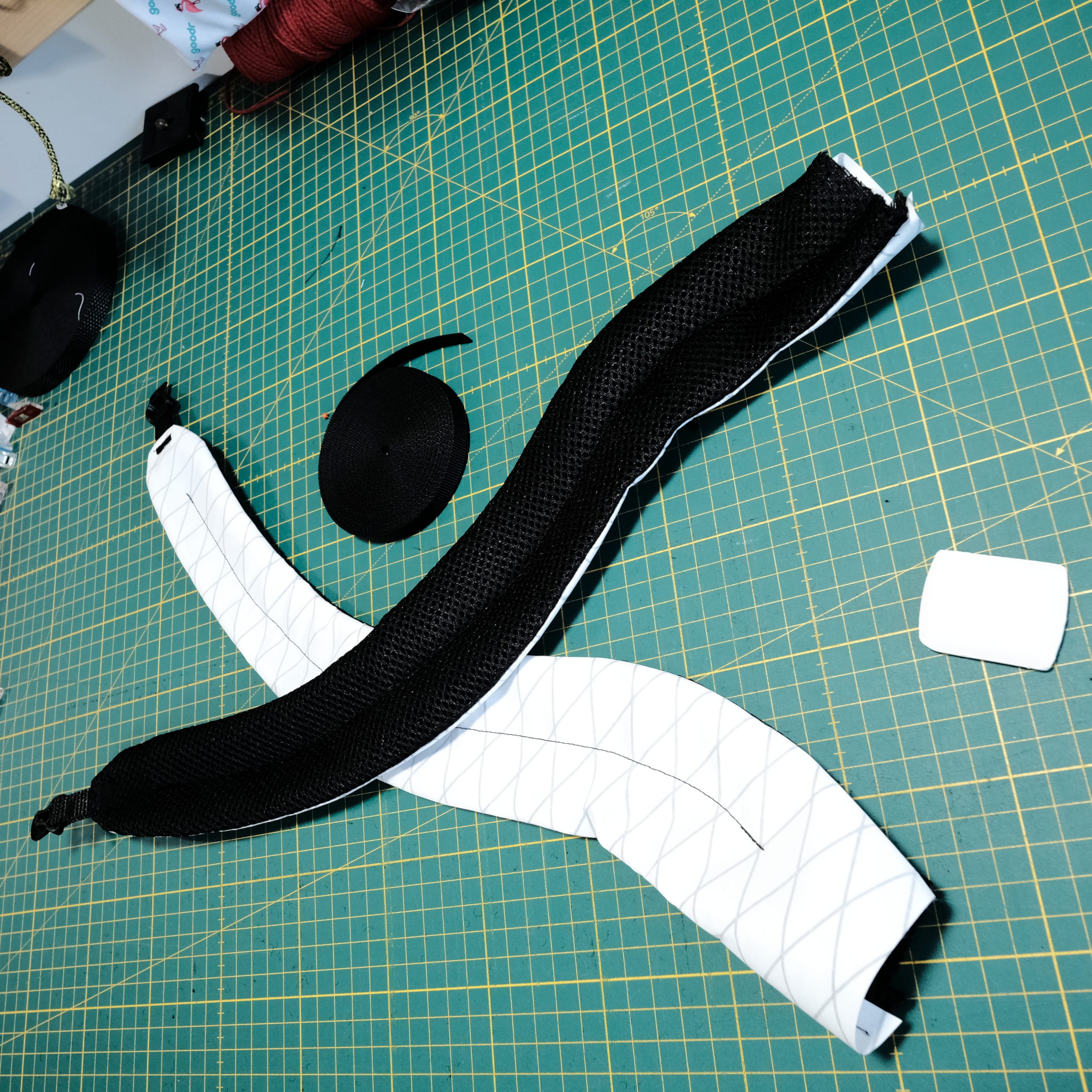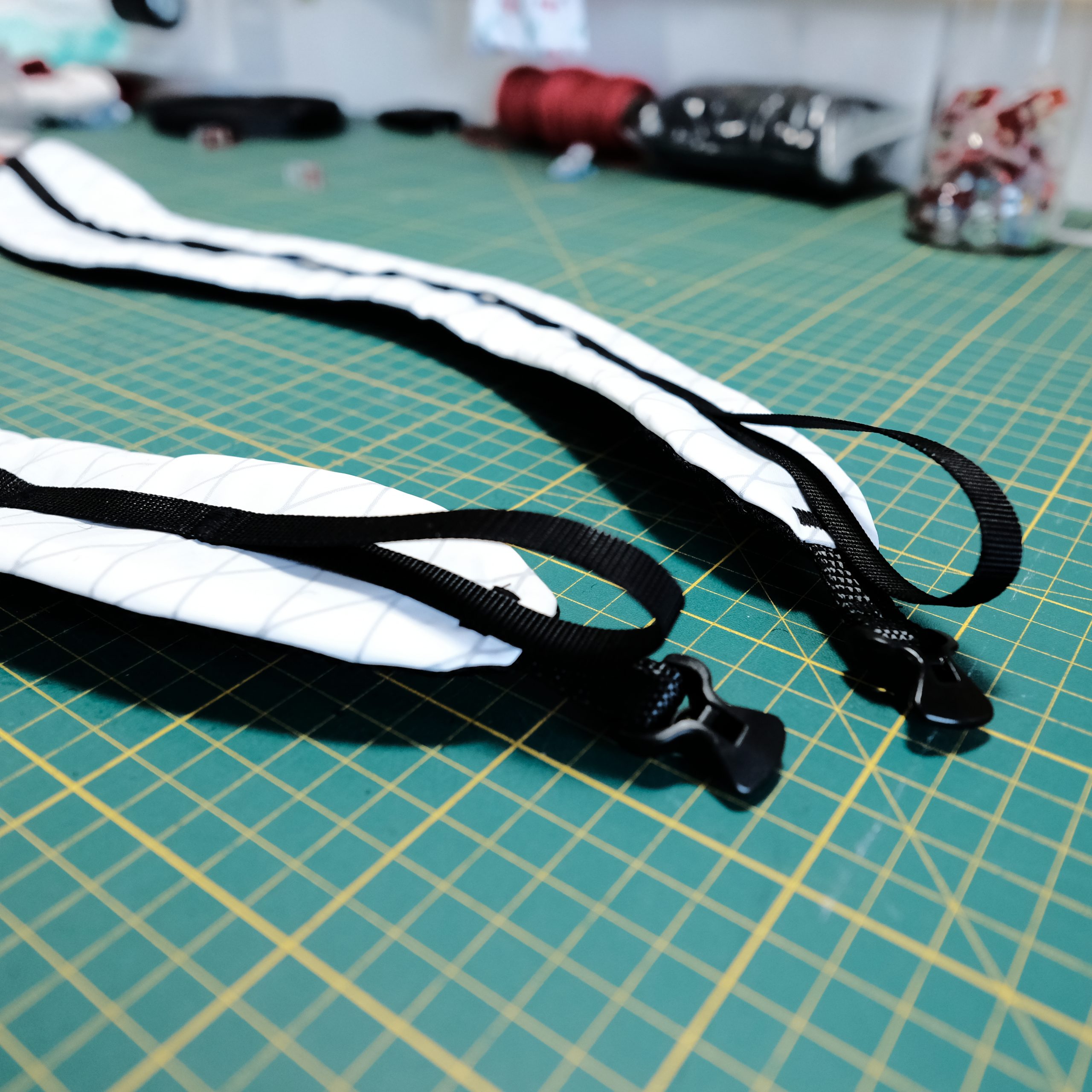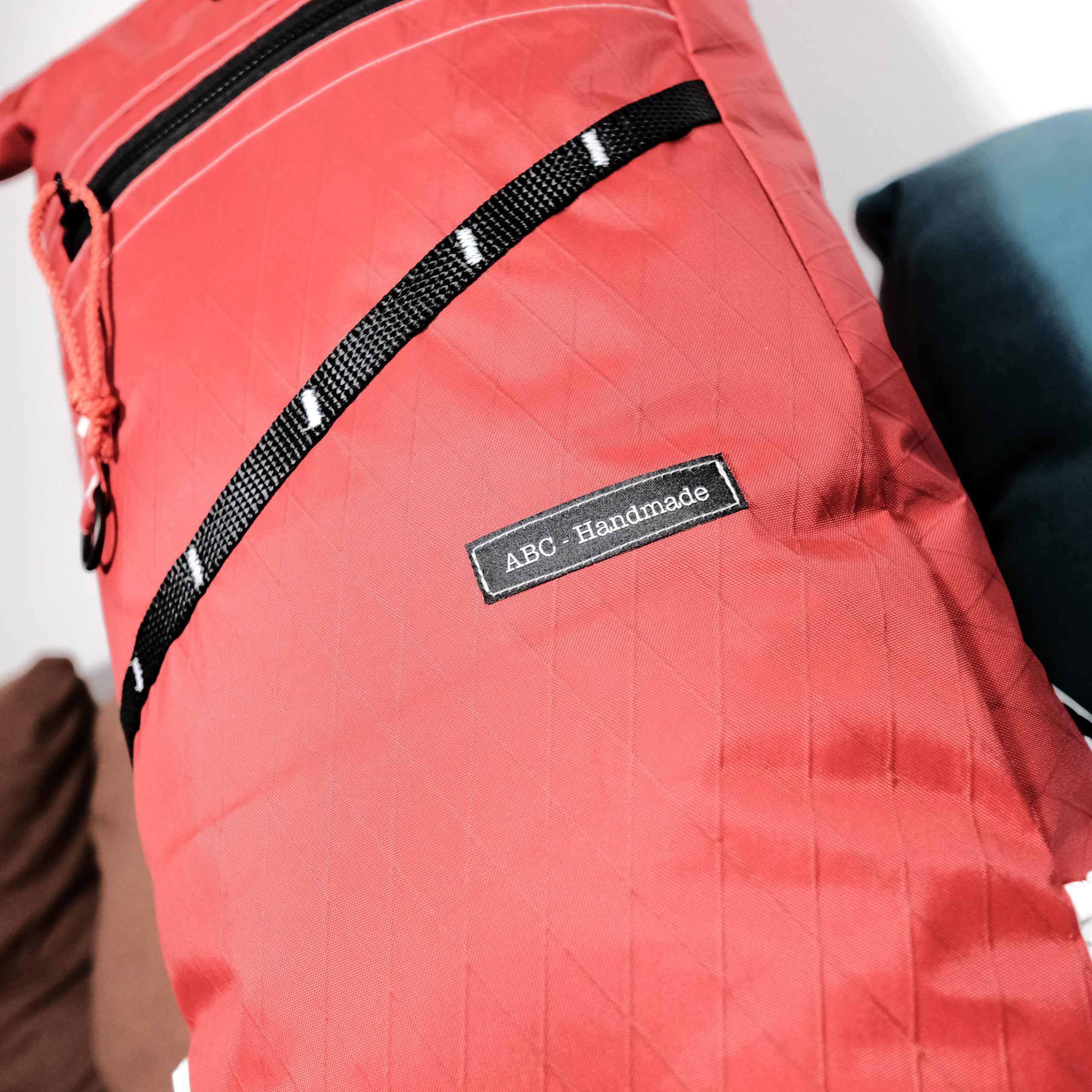I’m looking forward to a new year of making packs. And what better way to kick it off than to publish a random selection of the behind the scene pictures I shot while building Santa’s pack. Now I need a new project I guess 😁
The Very Merry Christmas Pack 🎄
Here we are, pack is finished and ready to be gift wrapped. I think words speak less than pictures, so I will now paste some pictures! Unfortunately, I had little time to take snapshots before wrapping it up and leaving for vacation. But stay tuned, since I do have a mountain of behind the scene pictures coming up.
Thank you for the great support this year! See you in 2020! 🍾
Walkthrough building Santa’s Pack
Given that my goal here was to make a good looking day-pack which can double as hiking backpack for a Christmas gift, I did not go overboard with the design and details, and stayed within the realm of lightweight and simple designs with more generic features. I opted for the lean front instead of a cargo pocket I was considering in the design to keep the day-pack feeling, and made use of the front zipper pocket idea to keep in line with daily commuting habits and needs. I know you are curious, so without further due, here is a picture of the (almost) final pack.
The finished pack ended up a bit fatter on the bottom side than the pattern it was based on (you will see some differences with the Skinny pack) but I kept it in line with the overall slimness/tallness of the original design. To get a bit more volume out of it, I also extended the maximum capacity of the pack with a higher roll-top, which brings the typical volume of this pack to about 25 to 30 liters. Another key difference is the much bulkier side pockets, which are clearly highlighting the hiking side of the design.
Side Pockets
To counter the risk of water pooling in the side pockets due to how waterproof the X-Pac fabrics are, I finished the bottom-most side of the pockets with a strong mesh which acts as both a water drain, and a more stretchable fabric for the pockets themselves. The same design with only the VX-07 fabric would not allow a bottle to sit all the way down the pocket. This one does.
Padding the back panel
The back of the pack follows my most recent padding concept, with a high quality 8mm closed-cell foam pad coupled with a 3D mesh to offer a decent level of comfort and good breathability. This construction only covers the center part of the back panel. I find that the weight-to-support ratio of this construction is a good balance, and although this does not really qualify as ultra-light, I would probably consider this on most of my personal upcoming hiking and trekking packs.
The dimensions and V-shape of the padding are meant to follow the human torso’s shape, and I find that sweat mostly accumulates following the vertebrae, which is where the 3D mesh will make the most difference. I also consciously pack bags to avoid sharp edges anywhere my bones protrude (shoulder blades, pelvis) and found that this configuration give me adequate protection for my back without sacrificing too much weight.
Simple shoulder straps
If there is one construction stage I enjoy the least, it’s making the shoulder straps. I’ve been through many different concepts and iterations, and never quite liked the result or the process enough to make it my standard approach. That is, until recently, when I decided to completely avoid padding the straps with any kind of foam and rely on a better profile to spread the weight on one’s shoulders.
I designed curved straps which rely only on 3D mesh, and present a bit of a wider profile to compensate the lack of foam padding. Depending on the expected pack load and the fabric used, I usually add a daisy-chain webbing all along the strap, or only at both ends for the load lifters and accessory loops. The reason I mention load is that I found with loads higher than 6 kilograms the fabric’s normal stretch and the 3D mesh limited padding will be hampered by the webbing, which then tends to dig into one’s shoulders, effectively removing the benefit of a wider shoulder strap. If the webbing does not cover the shoulders, the fabric’s stretch will help spread loads more evenly.
The reason for me to ditch the foam was mainly due to how cumbersome and over-complicated it is to build strap with high-quality closed-cell foam. I have used Evazote EV50 in different thicknesses (mainly 4mm and 8mm) and always preferred building the straps as a sleeve (seams on the inside) for comfort as well as robustness. The major drawback of this method is that inserting the foam a posteriori never really yields perfect aesthetic (at least, I’m not skilled enough to make it look good). On one hand, EV50 tends to be very “sticky” and making the whole inserting process quite annoying. On the other hand, the sawing machine I use has limited clearance below the foot, and the stack of 3D mesh, 8mm EV50, fabric and webbing is just too much for a household machine to handle.
Now enough with the text, and on to the pictures! I have limited pictures of the final pack because I was running out of time and had to eventually gift it away, but I do have a significant amount of behind the scene pictures, which hopefully will be as satisfying to you as these are to me. Stayed tunes for the next post.
Time for a Custom Christmas Pack
Although I’ve had limited time to work on new designs in the last months, I still had one goal for Christmas! Make Santa’s carrying sack . So I got my hand on some bright red X-Pac VX-21 which I knew was going to do the trick, and had some white VX-07 on hand for the smaller details!
The first step to designing a new pack is – for me – always about sketching a few ideas on a piece of paper to get a feel of what I could do and whether or not I will achieve what I set out to do. I started out with the shape and curves of the Skinny, but wanted to get more volume out of it, so I bumped the dimensions a bit and especially worked on extending the roll-top. I was hoping I could bring in different features that would make this pack first and foremost a day-pack, but also make sure this would still be a suitable choice for a hike. So I considered a bunch of options such as a cargo pocket, daisy chains for attachments, lightweight but decent back padding, among other things. I drew a few options and quickly settled on one look. You’ll see it when I post the project pictures.
Note – Keep in mind that the dimensions written here are just bread crumbs I left myself before even starting, and I more often than not readjust them while cutting things out. So don’t take these too seriously.
Stay tuned!
Thick Foam in Shoulder Straps
I love building backpacks. I just do. But the one thing that I enjoy the least, is building padded shoulder straps. Between the threads making a mess, the clearance below the presser foot not being enough, and the needle breaking because of tensioning issues, I moved away from padding shoulder straps entirely. Nonetheless, here is a example of what you can do with some patience. And I will also throw in some other pictures of the complete build for the city hiker pack.
The City Hiker Pack
The City Hiker, as the name says, is build with less outdoor and more city commute in mind. Although using the usual construction techniques of ultralight hiking/trekking packs, this particular pack emphasizes small volume and high comfort with maximum padding of the shoulder straps, and of the back panel with a thick high quality closed cell foam pad (removable).

Aesthetics has a weight cost which should not matter for daily commute, but the whole pack still only weighs in at 410g fully padded. Which makes it a great companion for a day hike as well. This packs also improves ventilation with vertical 3D mesh embedded in the back panel (instead of only on the hip belt like most ultralight packs).

Here are some more pictures of the finished pack. I apologize for the low quality pictures, I ran out of time to document the pack before gifting it.
